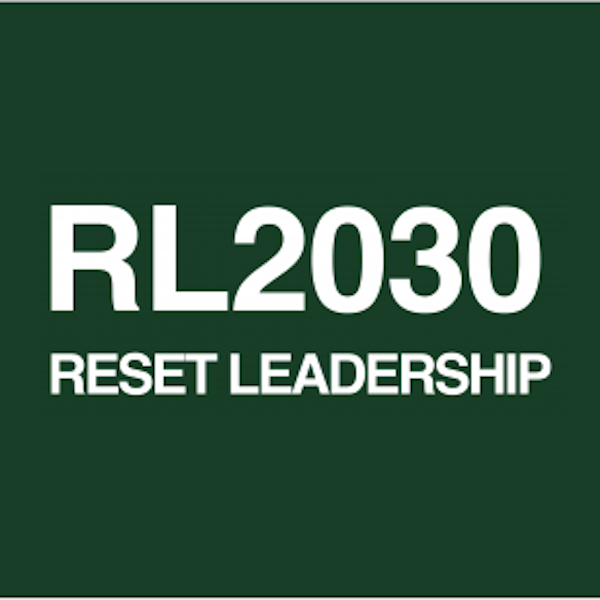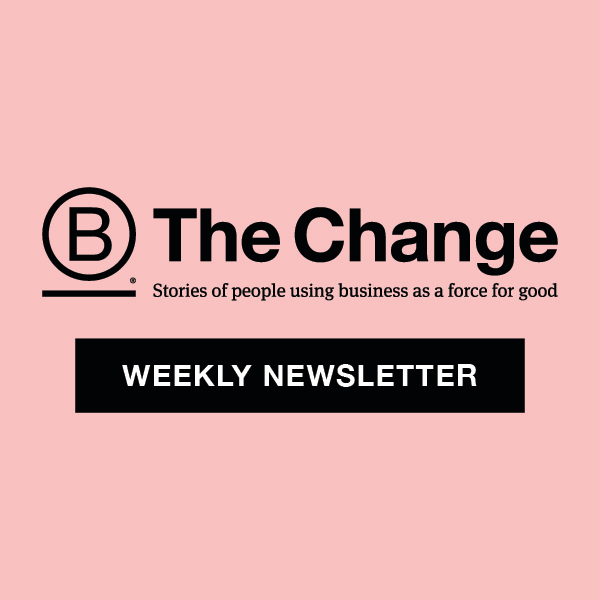How the Financial Industry Is Working to Close the Racial Wealth Gap: Tapping the Power of Community and Collaboration
March 3, 2022
B Corps and Other Purpose-Driven Organizations Shape Products for Underserved Customers and Advocate for Policy Change
The racial wealth gap in the U.S. has its roots in decades of history, policy, and systemic barriers that have guided the financial industry. Over time, the gap has widened to create large financial disparities for individuals, businesses, and the U.S. economy as a whole:
- In 2019, the typical white family had eight times the wealth of the typical Black family and five times the wealth of the typical Hispanic family. People of Color have been underserved by the banking industry as well: In 2019, 14% of Black households and 10% of Hispanics had no bank accounts, compared with 3% of unbanked white households.
- The venture capital sector had a record-breaking year both in terms of capital raised and capital deployed in 2020. However, the percentage of that capital that flowed to entities led by women or others who are Black, Indigenous, or People of Color actually decreased.
But some in the financial industry are working for greater economic inclusion and positive social impact to undo the structural barriers and close the gap. These include Certified B Corporations and other purpose-driven financial organizations that are shifting capital to People of Color and other communities that traditionally have been underserved by banks and other financial institutions.
Their work was the focus of a recent LinkedIn Live event moderated by Jorge Fontanez, CEO of B Lab U.S. & Canada. Fontanez started the conversation by noting that B Lab, the organization that oversees B Corp Certification, is committed to scaling tools and best practices for purpose-driven business leaders. “The fact that we bring companies together to learn from each other helps us move the needle on how we not only affect issues related to closing the racial wealth gap, but also shift behavior, culture, and systems of injustice,” he said. Small businesses present a large opportunity for putting capital to work for positive impact, Fontanez said, noting that 93% of Black-owned businesses are sole proprietorships with average revenue under $30,000; 60% of these are women-owned.
“B Corps know that we have to change the system because we are also on the front lines of this work,” Fontanez said.
To address and consider ways to act on historic and ongoing challenges of gaining access to capital for people in Black communities, B Lab U.S. & Canada invited several financial industry leaders to share their thoughts:
- Darrin L. Williams, CEO of Southern Bancorp, a B Corp that also is a Community Development Financial Institution.
- Rodney Williams, Co-Founder and President of SoLo Funds, a new B Corp and financial technology company for underserved communities.
- Morgan Simon, Founding Partner of Candide Group, an Oakland-based registered investment advisor that helps families, foundations, athletes, and influencers who want their money to work for justice.
This article shares highlights from the LinkedIn Live event and a separate Q&A with Simon.

Be a Part of RESET Leadership
B Lab is excited about the potential of the RESET Leadership initiative to bring together the voices of B Corp leaders with other impactful companies in our ecosystem, like the companies in B Team’s network. Together with this broader network of allies, we can be a powerful force for economic systems change.
Let’s discuss the narrative of what it means to close the racial wealth gap. What are we not emphasizing enough when we hear the statistics?
Darrin Williams: You cannot lose the fact that we didn’t get here through race-neutral policies. We are in this position because of intentional discrimination that has been inflicted on People of Color for centuries. … We have to talk about dismantling and destroying systems that continue to perpetuate this racial wealth gap. Black and brown businesses are continually denied access to capital and credit, and when they are granted access to capital and credit they aren’t given as much as they ask for.
Rodney Williams: The premise of SoLo Funds stems from our personal experience, seeing friends and family who needed access to small amounts of capital. For a certain group of Americans, this was an extreme pain point. This led to people going without, this led to crime, this led to deserts of opportunity.
When you can’t think about going to work because you can’t keep food on the table or keep the lights on. I saw it with my mom getting paid on Friday, but a bill was due Wednesday. That gap caused tons of inconsistencies. That’s the problem and the premise that we are solving. We’re teaching our members real finance … and graduating them into more traditional financial service products.
Morgan Simon: At Candide Group over the past four years, over 75% of our investments have been in businesses led by women and People of Color. This was not with any particular numerical goal in mind, but simply the result when we start with the question: Who best knows their communities and can help build community wealth?
Sometimes we look at the question of diversifying the investment space as if investing in women and People of Color is this radical shift, when actually it’s just correcting a past problem, which is about severe overindexing of funds to white entrepreneurs. In most communities in the U.S., particularly urban areas like the Bay and New York where most investments happen, these places are actually majority inhabited by People of Color. If your investments don’t match the basic demographics of where you’re investing, that implies you’d have gone out of your way to NOT invest in diverse founders.
We’re starting with the idea of let’s at least make sure people get their fair shake. And then on top of that, if we want to talk about re-addressing historic wrongs and historic wealth extraction from communities of color, then yes, we might want to go even further than just matching area demographics and seeking to proactively replenish historically stolen resources. We also need to be innovative with the types of capital we provide. We need to be open to taking that broader look of what are the ways that capital is most helpful to the community, and how can we lean into that while also achieving the financial objectives of any particular investor?

Anti-racism Resources Page
We recognize that it is not enough to be quietly non-racist — we have a responsibility to become vocal, visible anti-racist leaders in our businesses and communities. The team at B Lab U.S. & Canada has compiled ways to step up in your organization and as an individual.
What barriers to access to capital must be overcome? How are your business models addressing those barriers?
Darrin Williams: As a CDFI, 60% of our activity must take place in low- and moderate income communities. In the financial industry, it’s not diverse: 82% of loan officers are white, 9% are black, 2% of people in the C Suite are African American. We just don’t have diversity in this space, which shows through in the lending activity. These barriers really date back to slavery. Black people have been denied access to wages, denied access to land ownership.
Government action has favored white people and disadvantaged People of Color. From the Homestead Act, and land ownership that forms the basis of wealth, to redlining, when government action drew lines around neighborhoods where (federal mortgage) loans would not be made.
Rodney Williams: Regulatory barriers to innovation as well as the barriers of assessing risk are two of the biggest challenges for the communities that we serve. Speaking to the regulatory history that Darrin walked through, it’s a history of products designed to not support all communities fairly. They were designed that way, they were executed that way. The regulatory architecture is still there. When you go back and think about CDFI — these things were trying to correct mistakes of our past. There’s a long way to go.
Everybody has to design something like what was done in the past, which again has inherent bias. We’re trying to push innovation. We’re going to try to design something that’s going to be truly financially inclusive. It needs to be designed from a blank slate … with the insights of the community, not what was there before. Because what was there before did not work.
Morgan Simon: There’s a two-way problem, which is there are investors who may, from a values perspective, be very excited about supporting communities but don’t really know how to do it. And then there may be communities that are interested in having capital work differently in their community but don’t necessarily know where to find or how to work with those investors.
We need to make sure that capital is able to match community need and to figure out the structures with which to do so. And that can mean sometimes that people do want traditional venture terms; sometimes they want to do something different. We need to be flexible and open to either of those possibilities. But what it always comes down to at the end of the day is kind of taking that leadership and guidance from communities of color.
How are you advocating for better policies to improve access to capital for small businesses owned by People of Color?
Rodney Williams: There are many definitions of a small business. But I’m going to talk about a large group of small businesses — they’re independent contractors. Most Americans have a side hustle or they make money Ubering but they are also a teacher, or sell T-shirts on Etsy and are also a DJ. When I think about access to capital for this group, $400 can be inventory for an ecommerce website; $300 could keep the lights on. When you have a cash flow issue, that means there’s a list of things that get paid and there’s a list of things that don’t get paid. That could be the difference between serving a customer and not serving a customer.
Darrin Williams: If we really can close this gap or provide parity between Black-owned businesses and non-Black businesses … that’s going to stimulate the economy for everybody.
CDFIs and MDIs are excited about the Emergency Capital Investment Program, which is one of the pandemic relief programs. … Congress is going to allocate $9 billion to CDFIs and MDIs. This program incentivizes us to take those dollars and leverage them and loan them to target populations. … The more loans we do to underserved people and places, People of Color, then we have a chance to reduce the amount of dividend we have to repay. That’s a real solution that could be transformational in this space.
Morgan Simon: The CRA (Community Reinvestment Act) needs a major overhaul. Historically CRA has simply focused on the zip codes where capital is deployed, without particular metrics or objectives related to more concrete community wealth-building. That’s been a huge kind of missed opportunity to enhance impact because there is greater flexibility around those dollars than traditional bank capital. There are also questions as to whether there should be greater tax incentives connected to investments that are creating a greater social impact, as opposed to creating negative externalities that the government then has to clean up with our tax dollars.

Subscribe to B The Change Weekly
Learn more about this growing movement of Certified B Corporations using business as a force for good, and sign up to receive the B The Change Weekly newsletter for more stories like this one, delivered straight to your inbox once a week.
How are you seeing B Corps connecting around these issues? What kinds of collective action have you seen work well or what might other B Corps model?
Darrin Williams: We are part of the Global Alliance of Banking on Values, a mission-focused network. We regularly get together and talk about ways to move the needle and improve access to capital for People of Color. I talk with people around the world, hear how they are being innovative, and I take their ideas and bring them to the U.S.
It’s amazing how much I can learn from them. Look at Africa and how most banking is done in a way that has democratized the process — it’s on your mobile phone. If we were inventing a financial delivery system today, we would not invent what we have. It’s broken; it does not work. Developing countries have much greater access, democratized finance where everybody has access. That’s what we need to drive to and build digital apps … designed for the people we’re trying to serve.
Rodney Williams: We want to partner with other, larger financial institutions, B Corps, banks. … To do what we do, we have to partner with a bank, from a regulatory infrastructure. We’re like the middle layer — it goes to access. Can we create a digital service or solution leveraging the services that a bank can provide to give greater access across the new world? Innovation is about designing products that truly meet the communities that you serve. That’s going to be a challenge for the future.
Morgan Simon: We launched the Climate Justice Investment Collective a year ago, and that is now growing into a climate justice fund. We had feedback from investors that they were excited to be supporting climate justice but prefer to do it through a fund vehicle. That’s another way that we’re trying to make the sorts of investments that are really looking at a clean energy future that can also connect to questions of systemic inequality, clean energy access, and wealth building.
What’s your take on the role of the investor community in shifting the conversation and addressing systemic issues that create barriers to capital?
Darrin Williams: The investor community has a significant role. More venture capital dollars were raised last year than ever — $300 billion. The raw dollars going to Black founders increased, but only to 1.2% of that. To steal a phrase from Nike, these folks just have to do it and find Black and Brown founders to invest in. We have to continue to embed a racial equity lens in our core business functions. That’s part of stakeholder capitalism, thinking of more than investors or shareholders, and considering the implication of overall work on everyone and in particular with a racial equity lens on People of Color.
Rodney Williams: We have to start holding each other accountable. The B Corp community is all about accountability to the impact and purpose that we’re trying to deliver. … It’s not financial technology designed for big businesses or large deposits. We’re talking about micro lending, microfinance — terminology that’s normal in the rest of the world, but in the U.S. microfinance is a bad word. Microlending feels inefficient … that’s our biggest challenge. But that challenge has made us focus on the core business and actually create a sound business we’re proud of.
Black women face unique challenges in accessing capital. What products or services do you have to help Black women better access funding?
Rodney Williams: Black women are the largest users of payday loans. They’re also the largest customer base within the subprime market. … That’s a market that’s very dear to us; 69% of our borrowers are Black women. We’re actually introducing a new product … that is designed for Black women experiencing a problem that we believe technology can go out and fix.
Darrin Williams: We are a family of companies that includes a not-for-profit side with a high-touch financial development partner … that provides counseling and services … 70% of folks getting financial counseling were Black women. We work with them to move them to a more stable financial environment. Wealthy people have wealth advisers; it’s those with lower wealth who actually need wealth advisers. … We can’t take race-neutral solutions. We’ve got to be intentional.
Morgan Simon: Our Olamina Fund, led by Managing Director Leslie Lindo, is focusing on community wealth-building and so far has been 100% allocated to women and People of Color-led organizations. In 2021 this included loans to projects and organizations including the Carolina Small Business Development Fund that focus on underserved communities with an emphasis on businesses owned by People of Color, women, veterans, rural residents, and low-income individuals; and the Historic District Development Corporation, one of Atlanta’s oldest surviving community development corporations that is dedicated to preserving the availability of affordable housing in the Old Fourth Ward district.
Let’s talk metrics. The racial wealth gap is large. How do you define success in bridging that gap?
Darrin Williams: It goes back to the old saying, what gets measured gets done. You have to put metrics around this and hold people accountable. We’ve created metrics around our bonus program. When you incentivize people personally to get things done, it’s amazing how much gets done. We’re also in a conversation related to growing and hiring. I have not been pleased with the diversity of our (applicant) pool. If we don’t have a much more diverse pool and workforce, shame on us. We know that businesses that are more diverse outperform others.
Rodney Williams: Our goal here, to be very clear when we started this company, was to disrupt payday lenders. Our goal was to use financial service, create a fintech that was going to provide large access, mass access to emergency capital. Our goal is to do that across the nation as fast as we possibly can.
What you would hear is that this asset class isn’t safe. We have made it safe. We’re proving that if you help this class, if you help them when they’re in need, with a real solution, we’re graduating them to other things.
Morgan Simon: More people are starting to think more broadly about legacy and the idea that wealth can create a lot of different types of value. There is a broader trend toward people saying, “I don’t want to make money for my family, by harming someone else’s family.”
That’s the baseline question we all have to ask ourselves: What do you want your wealth to do for you and your family, and how is it behaving out in the world? The more that people start from that question, that point of inquiry, as opposed to the traditional finance question that centers “How can I grow money as much as possible regardless of who it may harm in the process?” the more we can lean toward investment practices that uplift communities and build true legacy.
Sign Up for our B The Change Newsletter
Read stories on the B Corp Movement and people using business as a force for good. The B The Change Newsletter is sent weekly.
